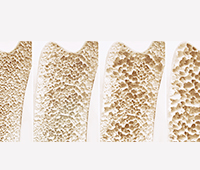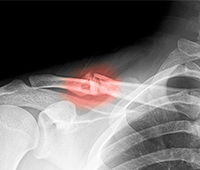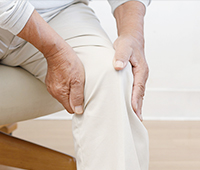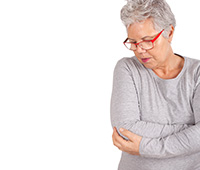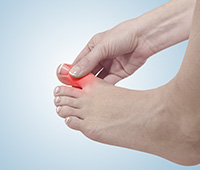WHAT IS Shin splints
- Definition
- Causes
- Symptoms
- Diagnosis
- Ayurvedic Tips
- FAQS
- References
Definition
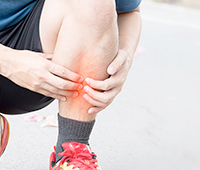
Shin splints is a condition where the shin bone pains causing discomfort. The shin bone is a long bone in the lower leg and often pressure on it due to activities such as running, jumping and similar exercises may give rise to such pains.1
As per Ayurveda, there is no homologous explanation to shin splints, but the pain caused is categorized under that caused by the imbalance of vata dosha.2
Disclaimer: The information on this page is not intended to be a substitute for professional medical advice. Do not use this information to diagnose or ayurvedic treatment of bone-diseases and/or shin splints without consulting the doctor. Consult your physician before beginning an exercise regime. "While we have products /ayurvedic medicines for bone-diseases and/or shin splints, you must consult an authorized physician before taking any of the products. For more information on products, visit www.dabur.com or call 1800-103-1644"
Causes
Causes OF Shin splints
The cause of shin splints is excessive pressure on the shin bone. This may be caused due to activities like running on hard surfaces, jumping, sports like athletics, basketball, etc.1
Many people who have a flat arch on their feet are a higher risk of having shin splints.1
Disclaimer: The information on this page is not intended to be a substitute for professional medical advice. Do not use this information to diagnose or ayurvedic treatment of bone-diseases and/or shin splints without consulting the doctor. Consult your physician before beginning an exercise regime. "While we have products /ayurvedic medicines for bone-diseases and/or shin splints, you must consult an authorized physician before taking any of the products. For more information on products, visit www.dabur.com or call 1800-103-1644"
Symptoms
Symptoms OF Shin splints
Some common symptoms of shin splints are as follows -1
- Pain in the shin bone
- Swelling and tenderness in the lower leg
- Soreness along the shin area
Disclaimer: The information on this page is not intended to be a substitute for professional medical advice. Do not use this information to diagnose or ayurvedic treatment of bone-diseases and/or shin splints without consulting the doctor. Consult your physician before beginning an exercise regime. "While we have products /ayurvedic medicines for bone-diseases and/or shin splints, you must consult an authorized physician before taking any of the products. For more information on products, visit www.dabur.com or call 1800-103-1644"
Diagnosis
Diagnosis OF Shin splints
Doctors generally identify shin splints by a physical examination of the affected part and its movements.1
An X-ray scan or CT scan helps find out if there is a hairline fracture or any damage to the bone and surrounding tissues.1
Disclaimer: The information on this page is not intended to be a substitute for professional medical advice. Do not use this information to diagnose or ayurvedic treatment of bone-diseases and/or shin splints without consulting the doctor. Consult your physician before beginning an exercise regime. "While we have products /ayurvedic medicines for bone-diseases and/or shin splints, you must consult an authorized physician before taking any of the products. For more information on products, visit www.dabur.com or call 1800-103-1644"
Ayurvedic Tips
Ayurvedic Tips Shin splints
Shin splints cause pain and affect the day to day movements. Especially for sportspersons, it makes training and activities difficult. It is managed with adequate rest and pain management. Rarely, a surgery may be needed for the tear in the tendon or muscle.1
Immediate care of the injury should be done by following the famous and simple R.I.C.E. approach. This R.I.C.E stands for Rest to the affected part, Ice application for pain, Compression and Elevation to stop swelling.
Management of tendon shin splints may be achieved by local Snehana (oleation) with oils processed with vata pacifying herbs and swedana (fomentation) like panda svedana to relieving pain.2
A healthy diet (ahar) and lifestyle (vihar) should be followed to stay injury free and to manage the condition effectively. These include:2
Diet Recommendations (Aahar)
- Drink plenty of water to stay hydrated and avoid cramps or the vitiation of the vata dosha
- Avoid alcohol and smoking
- Use lepa (ointment) made of sheeta and madhur rasa herbs to heal the injury faster
- Citrus fruits like lemon, oranges and tangerines are good source of Vitamin C and help in preventing sprains.
Lifestyle changes (Vihar)
- Provide adequate rest to the affected part
- Do gentle oil massage with mustard oil and turmeric
- Provide warmth through swedana karma (Sudation)
- Always warm up and stretch prior to initiating any exercises
- Perform certain exercises or asana to strengthen muscles
Some helpful asanas are as follows -



Disclaimer: The information on this page is not intended to be a substitute for professional medical advice. Do not use this information to diagnose or ayurvedic treatment of bone-diseases and/or shin splints without consulting the doctor. Consult your physician before beginning an exercise regime. "While we have products /ayurvedic medicines for bone-diseases and/or shin splints, you must consult an authorized physician before taking any of the products. For more information on products, visit www.dabur.com or call 1800-103-1644"
FAQS
FAQS
1.What is Osteoarthritis? How is it caused?
Osteoarthritis refers to a type of bone and joint problem in which a person suffering from it will have pains in joints. This happens due to the wearing down of the protective cartilage on the bones due to age or other factors. While any joint in the body can have osteoarthritis, usually it happens commonly in the joints of knees, hips, spinal column and hands.
Osteoarthritis is caused due to damage of the cartilages of the ends of the bones. This damage generally occurs due to multiple factors primarily being increasing age. Apart for age, the other factors that cause the damage to cartilage are Obesity, female gender and trauma to the joint.
2.What is Rheumatoid arthritis? How is it different from osteoarthritis?
Rheumatoid arthritis (RA) refers to an auto immune disorder where the body’s defense systems turn against the body and mainly affect the joints but may also severely affect the eyes, skin, lungs, heart and blood vessels. It generally manifests as pain in the joints along with swelling and difficulty in movements.
Unlike osteoarthritis which affects the weight bearing joints, RA affects any and most joints of the body. It generally presents with swelling (hot swollen joints) as a cardinal feature and also shows some systemic manifestations (such as affects the eyes, skin, lungs, heart etc) unlike OA.
3.What is osteoporosis? How is it recognized?
Osteoporosis refers to the condition where the bone becomes weak. Instead of the strong tissue that support the body structure, bones become brittle from inside and are capable of breaking with a minor jerk or fall. This leads to fractures in the hands, hips and legs with minor falls or injuries.
It can be recognized based on specific signs and symptoms and a BMD test. Symptoms are as follows -
- Easily having a bone fracture
- Pain in the back
- Height becomes lesser than usual
- A dropping posture
4.What first aid should I offer to a person with a fracture?
If you witness a person developing fracture, take these actions immediately -
- Urgently call for medical help or arrange for an ambulance
- Stop any bleeding if there is an open wound. This can be done by applying pressure with a clean cloth or tight bandaging.
- Avoid moving the injured area.
- Apply ice packs to the injured part
- If the person faints of is short of breath, put their head at a lower side and legs at a higher angle
5.How does one know if a child has rickets?
The signs and symptoms of rickets are as follows –
- Crooked or bow shaped legs
- Thick joints of hands and feet
- Protruded chest bone
- A delay in growth milestones
- Muscular weakness
6.How does one have a dislocated joint?
Dislocations are usually caused due to a trauma or as a sports injury. Falls associated with contact sports such as football, basketball etc can lead to a dislocation.
Additionally, a fall on the outstretched hand and trauma due to a motor accident, too can cause dislocation.
7.What is a Tennis elbow? How is it caused?
Tennis elbow refers to the pain in elbow due to swelling of the tendons which may occur due to repetitive movements of the wrists. Unlike the name suggests, the condition affects non-athletes as well.
It is caused due to overuse of the tendons resulting in a muscle strain injury. Any activity that requires repeated motions of the elbow and wrists can cause tiny injuries in the tendons leading to tennis elbow.
8.What is frozen shoulder and how is it caused?
Frozen shoulder refers to a condition where the shoulder seems to be frozen in its movements. This condition cause pain and stiffness in the shoulder and restricts any kinds of movements. Medically, this condition in also known as adhesive capsulitis.
While the exact cause of frozen shoulder is not understood, it is believed to be caused due to a swelling of the joints covering called as capsule. This may happen due to long periods of immobility or trauma to the underlying nerve.
9.How does a hip get fractured?
Generally hip fractures can be caused because of a trauma due to accident, falls, injuries or rarely violence. Hip fracture is very common in the elderly as it often happens due to a fall from height or sometimes even with twisting of the foot in people with weak bones. Younger people often have hip fracture as an outcome of a motor vehicle accident.
10.What is meant by slipped disc?
A slipped disc refers to the swelling in the cushion between two bones, most commonly the vertebra (individual bones of the spine). This cushion is supposed to provide mobility and flexibility to the spine. This cushion between the vertebra is called as a disc and is filed with a gel like substance that provides the flexibility.
Slipped disc is the swelling of this disc which causes pain and obstructs mobility of the spine. A swelling in the cushion leads to some of the gel in the disc to protrude out between the bones.
Disclaimer: The information on this page is not intended to be a substitute for professional medical advice. Do not use this information to diagnose or ayurvedic treatment of bone-diseases and/or shin splints without consulting the doctor. Consult your physician before beginning an exercise regime. "While we have products /ayurvedic medicines for bone-diseases and/or shin splints, you must consult an authorized physician before taking any of the products. For more information on products, visit www.dabur.com or call 1800-103-1644"
References
References
- Charak Samhita of Agnivesha. Vidhyotini Hindi Vyakhya- Sastry K & Chaturvedi G - Editors. Chaukhambha Bharati Academy, Varanasi 221001. Reprint 2011. Chikitsastana Chapter 28.
Disclaimer: The information on this page is not intended to be a substitute for professional medical advice. Do not use this information to diagnose or ayurvedic treatment of bone-diseases and/or shin splints without consulting the doctor. Consult your physician before beginning an exercise regime. "While we have products /ayurvedic medicines for bone-diseases and/or shin splints, you must consult an authorized physician before taking any of the products. For more information on products, visit www.dabur.com or call 1800-103-1644"
Know more on Bone Diseases
